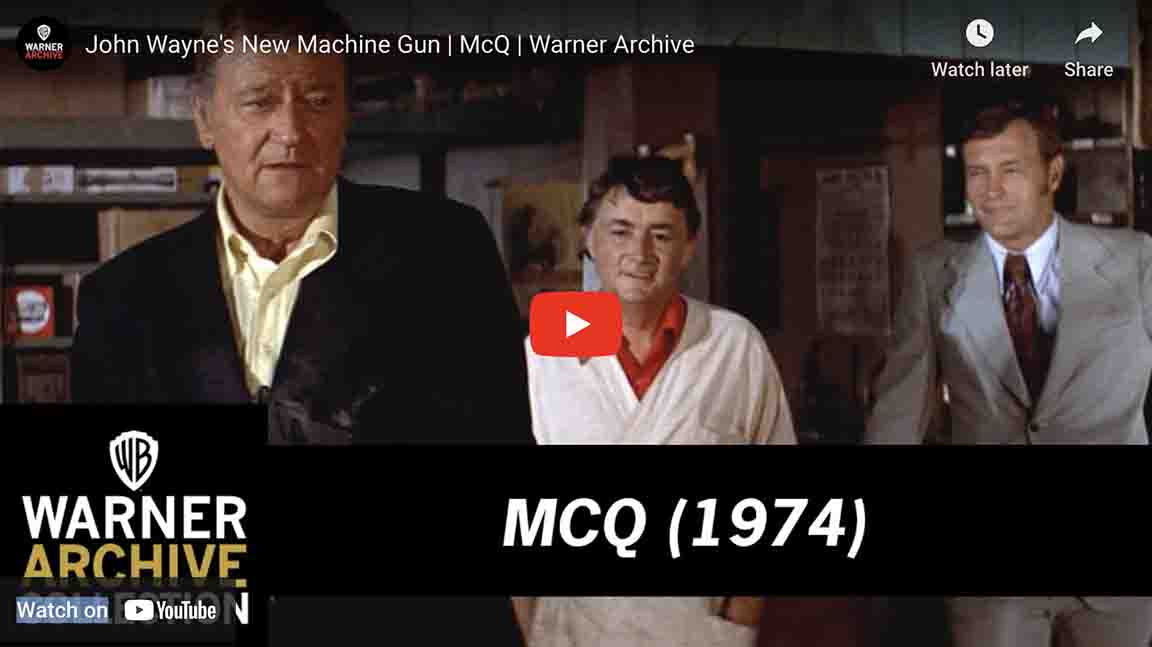FOR ALL THE horrible monotony of another mass shooting in the United States—with the usual cycle of violence, grief, and inaction—last weekend’s massacre in Monterey Park, California, did have one distinctive detail. Instead of yet another “AR-15-style rifle,” the Monterey Park gunman reportedly did his killing with an SWD Cobray M11/9, a weapon from an entirely different era in American gun violence.
Based on the Ingram MAC-10, the SWD M11/9 was one of the guns that led directly to the 1994 Federal Assault Weapons Ban. Its unexpected reappearance in 2023 is a reminder of just how long we’ve been living with the horror of mass shootings.
The MAC-10 and its descendants were the subject of intense public scrutiny in 1988 after a high school student in Virginia Beach used an SWD Cobray M-11/9 in a pre-Columbine mass shooting. Erik Larson, the author of Devil in the White City, took the weapon from that shooting as an entry point into an exploration of gun culture for a 1993 Atlantic cover story that he later expanded into his 1995 book Lethal Passage: The Story of a Gun.
Designed by Thomas Ingram in the 1960s, the MAC-10 was a compact, fully automatic machine gun built for guerrilla warfare in Latin America. One of the desired features was quiet operations, so Ingram partnered with Mitchell Werbell III, who designed a silencer that would fit the new gun.
Ingram seems to have been relatively normal for an arms designer, but Werbell was straight out of central casting. After serving in the OSS during World War II, he was involved in, among many other things: the Dominican Civil War, a failed plot to overthrow the Haitian government, a failed scheme for the Abaco Islands to declare independence from the Bahamas, and several failed plans to overthrow Castro. While brokering arms deals, Werbell represented himself as having active CIA ties, but this doesn’t seem to have been true: he’s all over the JFK Assassination Records, where he is repeatedly described in CIA documents as “unsavory” and a “wheeler-dealer” who was misrepresenting his background. Werbell did look the part: he favored berets and a walrus mustache, and at least one source mentions him occasionally sporting a monocle.
Together, Ingram and Werbell founded the Military Armament Corporation to manufacture and market the MAC-10 in both full and semi-automatic versions. In the early 1970s, Ingram added the MAC-11, an even smaller version of the MAC-10, to the company lineup. Werbell seems to have been not only colorful but difficult, and investors ousted both founders from their own company by 1972. Two years later, their gun made its cinematic debut in the John Wayne vehicle McQ, with Wayne himself demonstrating the weapon’s obscene rate of fire:
The MAC-10 and MAC-11 were inaccurate and difficult to control, and they frequently jammed. That made them a tough sell to militaries and police departments, and the Military Armament Corporation went under in 1975, never having cracked the civilian market.
Its assets, including the gun design, were sold at auction to former employees, and eventually trickled down to a group of investors led by Wayne Daniel, who finally managed to bring a semi-automatic weapon to market in 1978. Daniel’s version was inexpensive, easily concealed, and very easy to modify into a fully automatic weapon, which made it immediately popular with criminals. In 1982, the ATF banned the sales of open-bolt semi-automatic weapons like the MAC-10, and Daniel liquidated its assets.
Shortly thereafter, Daniel and his wife Sylvia founded a new company, SWD, to manufacture a version of the Ingram design that could pass ATF scrutiny. The result was the SWD Cobray M-11/9, which was more difficult to convert to a machine gun. It entered the market in 1983.
SWD had been founded to get around gun regulations, and the Daniels positively reveled in finding new ways to do so. It was illegal to sell silencers, for instance, so SWD sold the internal components of silencers while arranging for a different company to manufacture compatible tubes to house them. (If a consumer assembled these kits into a working silencer, that wasn’t SWD’s problem.) Similarly, it was illegal to sell a gun receiver without a serial number, but it was not illegal to sell a piece of sheet metal that could be folded into a receiver.
In 1985, the ATF got tired of the Daniels’ antics and charged them with conspiring to sell silencers, but were unable to secure more than a misdemeanor conviction. This seems only to have emboldened them: SWD took out an ad in Shotgun News with the names of the agents involved, under pictures of Hitler and Mussolini. The company survived long enough to cash in on its own nostalgia, advertising the M-11/9 as “the gun that made the ’80s roar,” but the 1994 Federal Assault Weapons Ban banned the SWD Cobray M-11/9 by name, finally ending its manufacture for good.
By that point, though, thousands of SWD M-11/9s were already on the streets, and the Assault Weapons Ban had a grandfather clause that kept them there. These days, MAC-10 variants are seen as antique and unreliable—in contrast to the AR-15, no one restarted manufacturing them when the Assault Weapons Ban expired in 2004—but the guns still are out there.
In 1999, five years after their manufacture had been banned, the Monterey Park gunman was able to purchase one of these grandfathered SWD M-11/9s. In a picture released by the Los Angeles Sheriff’s Department, the gun looks to be in pretty rough shape after all these years: It’s faded and discolored and seems to be rusting. It still worked well enough to murder 11 people and injure 9 more.
Thank you for visiting POPULA! Add your email here to receive our newsletter






